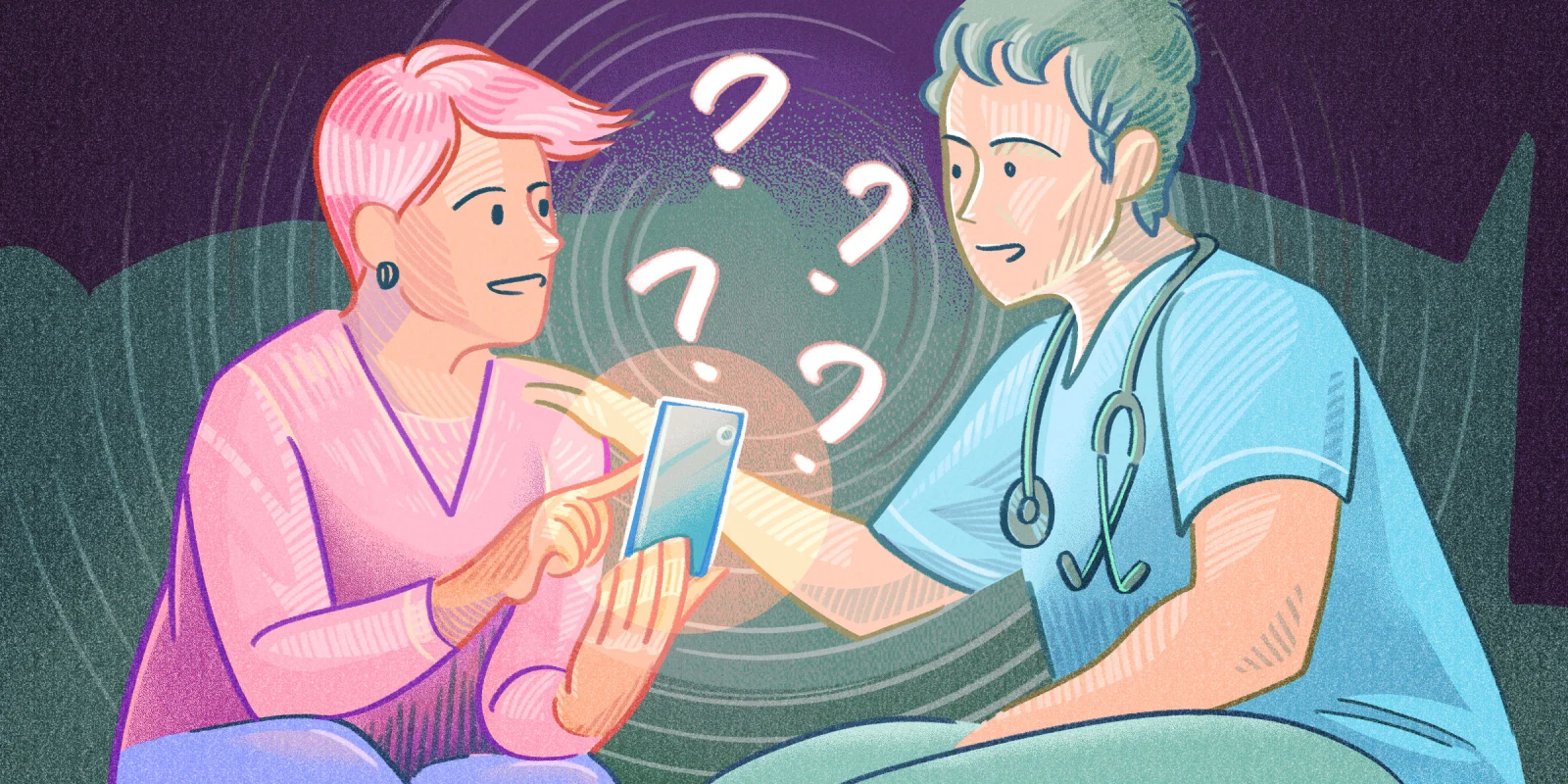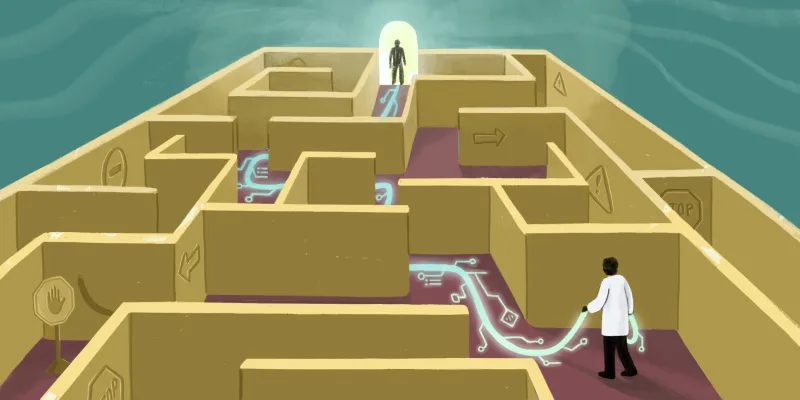Recently, the topic of self-diagnosis has reached a fever pitch. National news outlets have covered the phenomenon regularly over the last few years, publishing articles on individuals who say they have chronic lyme disease; teen girls who claim to have developed Tourette syndrome; and adults who self-report late-onset ADHD. Among these accounts, a common thread is that self-diagnosis, though occasionally accurate or semi-accurate, is frequently misguided — or worse, dangerous. In the era of patient-centered medicine, then, clinicians who treat such patients must tread a fine line between respecting patients’ notions and providing them with the proper treatment. Doximity spoke to three physicians who provided insights on how to balance patients’ perspectives — and concerns — while debunking the veracity of their self-diagnoses in this internet age.
Why is the practice of self-diagnosis so common? Dr. David Wolpaw, a family medicine physician in Connecticut, attributes it to the rise of online search engines that allow patients who may feel disempowered by their illness (putative or not) to reclaim some power by deducing said illness’s root. Additionally, social media can raise the profile of certain fringe disorders, and — given that symptoms often overlap among diseases — can present a convincing case for flashy, albeit rare, diagnoses. Another common source for self-diagnosis is more conventional: family members, particularly those who’ve experienced an illness with similar symptoms. “It's not always the internet, it’s often friends and family,” Dr. Wolpaw shared. “The patient will say [for example], ‘My brother had this.’ That's [also] common with married people. So it’s about understanding what influence family members have had.”
Though for some patients self-diagnosis can be wrapped up in identity, or in wanting to receive compassion for behavior that would otherwise be stigmatized, for many patients, the allure of a particular diagnosis is less the label than the associated treatment. Dr. Wolpaw hypothesized, “People want something done. They come to a doctor because they think ‘doctors can cure you.’ … But the reality is for many things you’ll just have to ride it out. Many patients would rather do something than nothing because they feel empowered by it.” Furthermore, he explained, “People come in wanting not just a specific diagnosis, but a specific course of action. … People can be very demanding of that.”
And yet, the primary danger of self-diagnosis is that if it’s incorrect, so too is the treatment — meaning the patient can inadvertently incur additional costs, to say nothing of harm. This makes the imperative to confirm or debunk the patient’s beliefs, and to figure out where they’re coming from, all the stronger. It’s one thing to “want a specific test that would reassure them like an X-ray; that’s not a big deal to order,” Dr. Wolpaw explained. It’s another thing entirely to “demand an MRI,” or to seek an antibiotic (with its attendant side effects) “for a cold that’ll resolve itself in days.”
How, then, can clinicians push back against patients’ claims while ensuring they receive the proper treatment for whatever is actually ailing them? For Dr. Karen Weinstein, an internal medicine physician in Florida, the crucial tactic when determining next steps is to explain to the patient why their line of thinking might be wrong, rather than just declaring it to be so. She explained, “You have to validate their opinion. You have to tell them why you agree or disagree and you may have to do a little bit more investigation to prove to them that what they said is not correct, or to give an alternative diagnosis. I think you can't dismiss it outright. I think they’ll lose confidence in you [if you do].”
Dr. Wolpaw agreed: “If I think [the patient is] on the wrong track, I don't want to say ‘You’re wrong, that’s ridiculous.’ I have to acknowledge that from their perspective what they’re saying makes sense. I [just] have to decide what it actually means. … That’s the art of medicine: not only addressing what you think the right thing is, but addressing the patients’ concerns. You have your own agenda and the patient has their own agenda. You think they’re the same thing but they’re not always. And you have to address both.”
In terms of practical steps clinicians can take when dealing with self-diagnosing patients, all three doctors recommended starting off the visit with a discussion of the symptoms that led the patient to their diagnosis in the first place. Dr. Jessica Mason, an EM physician in California, shared: “I like to start by asking them, ‘What makes you think that you have this diagnosis?’ And then just let them talk and explain. And the answers they give will usually be ones you’d get if you just asked them what they’ve been going through anyway.”
Dr. Weinstein agreed: “I might ask a patient, ‘What do you think is wrong with you?’ And that is a very helpful question to answer, because it may either put me on a track to look at something else or it may tell me what the patient is thinking.”
To counter the initial misdiagnosis, Dr. Weinstein also recommended reviewing empirical data with the patient during the visit. She shared: “Having a computer in the exam room, it's actually easy to look things up and there's a lot of patient education articles … where you can pull them out, and given the time you can review them with the patient. And I think understanding that we don't always have all the information and things might change with more information [is key]. Doing more testing. [So that] at least they understand that it's not always black and white.”
Though patients often come in confident in their (largely internet-derived) diagnoses, all three doctors noted that they can be hesitant to reveal where their initial information came from. Adding fuel to the fire is that online search results are often alarmist, leading to unnecessary anxiety for patients. Dr. Wolpaw explained: “When you Google symptoms, you’ll see the same things in the top 10 — cancer, stroke, heart disease, Lyme disease. People often Google things to feel better and Google won’t help with that. … I tell [patients], ‘When you Google about medicine, it's like Googling any subject — if you know a lot about a subject, Google is great and you can find out what's bogus and what's real.’ But most people know little about medicine, so they may find a website that looks legitimate while a doctor would know that it's nonsense.”
Pointing patients to more credible sources, and clarifying for them what’s actually going on physically or psychically, can be helpful in ensuring they stay engaged in treatment. Dr. Mason shared, “Usually people are pretty reasonable and they come to you because they are seeking your expertise. Most of the time I find that I can explain my reasoning and many times they agree with me.”
Dr. Wolpaw concurred: “If you have a patient who you’re always arguing with or there’s always tension with, they’ll probably [go and] see another doctor [anyway].” However, per Dr. Weinstein, such doctor-hopping situations are “few and far between” — which suggests that ultimately, patients want to find relief from suffering — whatever its source.
Indeed, at the heart of the self-diagnosis issue is a concerned patient who’s involved in their own health care; showing them that you’re in their corner can only improve their health outcomes. As Dr. Mason put it, “I think [self-diagnosing] is a really positive thing actually because when a patient comes in and they have taken the time to look up their symptoms, this is a motivated patient. They’re trying to learn. That impulse reaction that many doctors have with an eye roll is something [they] should check [themselves on]. … Let’s have a paradigm shift and see this as a good thing, not an irritating thing.”
Clinicians, have you ever been tempted to diagnose yourself with something? How do you proceed while keeping in mind the old saw, “A physician who treats himself has a fool for a patient?” Share your experiences in the comments below!
Illustration by April Brust







